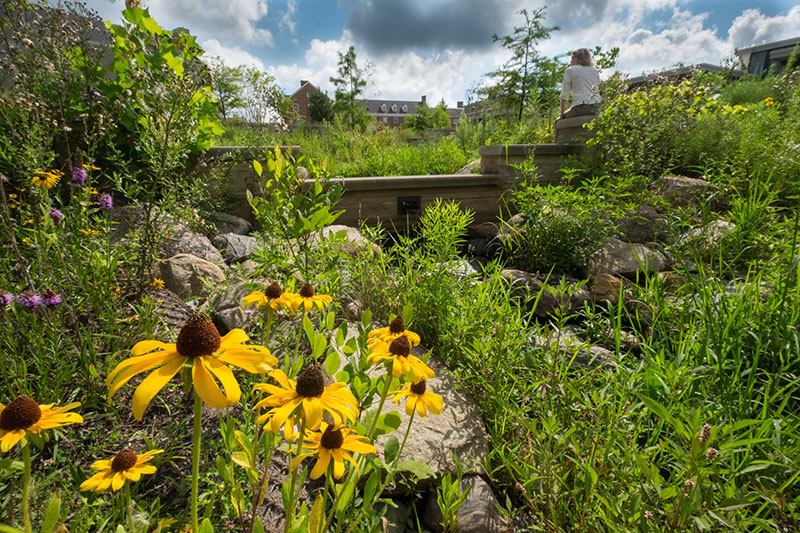

Miami's rain gardens slow and purify runoff while adding beauty and habitat
By Susan Meikle, news and communications
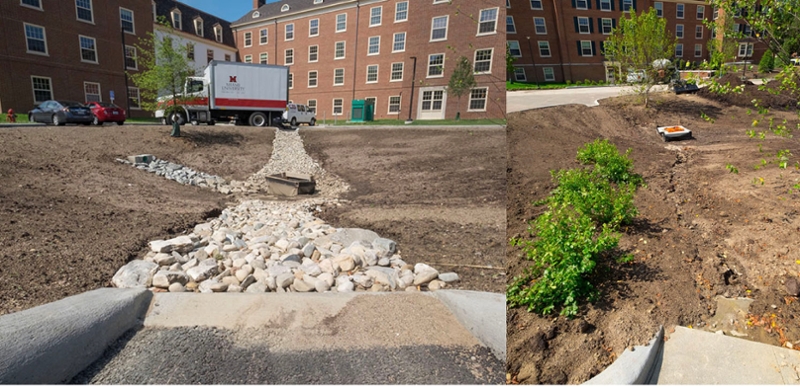
Ready for planting: new rain gardens in preparation near Hahne Hall (left) and Martin Dining Hall. Note the channels for directing excess runoff into the storm drains.
Two new rain gardens are being created on campus, joining the extensive rain garden on Western campus and three others designed to help reduce and purify rain runoff.
Planting of the two new gardens will be complete with the opening of the newly renovated residence halls on North Quad next month. One is located to the west of Martin Dining Hall and one to the east of Hahne Hall.
Designed by Vincent Cirrito, landscape architect in physical facilities, Miami’s rain gardens help prevent excessive runoff that can cause erosion, water pollution and flooding.
Stormwater runoff from roofs, walkways, parking lots and other hard surfaces flows through the rain gardens and soaks into the ground, reducing the amount of rain runoff — and the pollutants that it carries — that flows through storm drains into natural waterways.
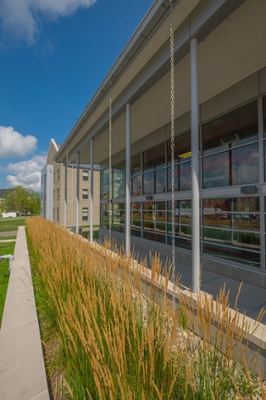
The rain garden in front of the geothermal heat exchange facility channels runoff from the roof, directed by rain chains.
Studies have shown that rain gardens can cut down on the amount of pollution reaching creeks and streams by up to 30 percent. Pollutants in runoff can include pesticides, trace metals, and hydrocarbons among other toxins.
What is in a rain garden?
Native plants are typically used in the rain gardens. Their benefits include:
- Deep root systems for enhanced water infiltration and drought tolerance.
- Habitat value and diversity for local ecological communities.
- Overall sustainability once established, reducing the need for maintenance.
Along with sedges (resemble grasses or rushes), shrubs and small trees, some of Miami’s rain gardens contain rocks and boulders to help capture, channel and divert rain water.
A sampling of perennial plants common in Miami's rain gardens includes:
- Cardinal Flower.
- Monkey Flower.
- Pickerelweed.
- Aster.
- Blazing star.
- Many varieties of sedges.
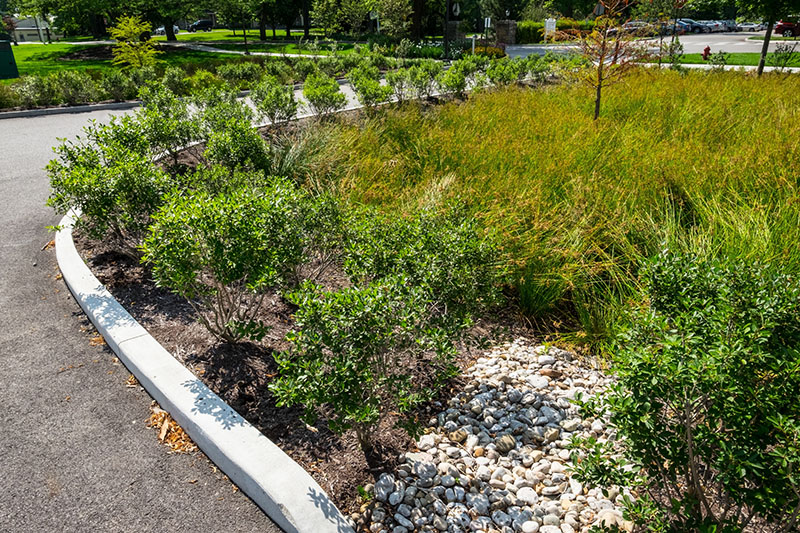
Two rain gardens flank the service drive between Dorsey and McBride halls.
In addition to the new gardens on North Quad, two rain gardens are located on Western campus, planted in 2014, and two on East Quad planted last year.
East Quad: Dorsey and McBride halls
Rain gardens adjacent to Dorsey and McBride halls flank the service drive and parking area between the two residence halls.
The gardens collect rain runoff from nearby parking lots, roads and other surfaces.
Geothermal heat exchange facility rain garden, Western campus
Rainwater from the roof is directed through rain chains into the elevated rain garden at the front entrance of the geothermal heat exchange facility.
Stepped Rain Gardens on Western campus
Starting from the Western Dining Commons (at left, below) and curving downhill, this extensive garden helps prevent stream overload and slows, cools and cleans rainwater runoff as it moves southward and downhill across Western campus.
The stepped walls (middle photo below) invite visitors to explore the garden for a closer look at the water-tolerant vegetation and the habitat it provides for many species of birds, butterflies, bees, dragonflies and other insects.
Stormwater moves through this area under the Western bridges (right, below) to Collins Creek and eventually flows to the Gulf of Mexico.
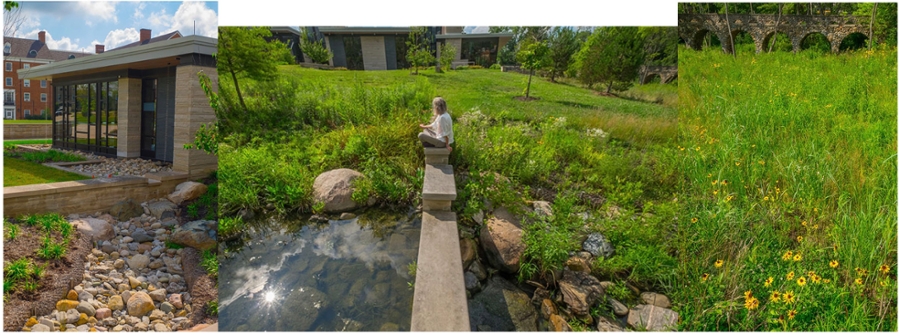
View more images by Scott Kissell of the Stepped Rain Gardens on the Photoshelter image gallery "Rain Gardens on Campus.".
